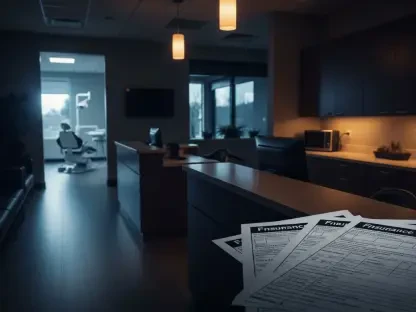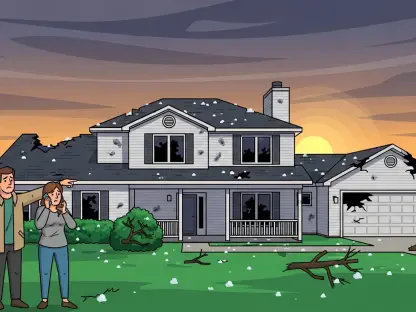The increasing severity and frequency of hurricanes have made it essential for coastal homeowners to seek stronger protections against such threats. Insurance premiums, on the rise due to potential damages, have become a crucial concern for residents in these regions. Amid these challenges, South Carolina’s Safe Homes program, initiated in 2007, has emerged as a significant lifeline. This state-funded initiative aids homeowners by providing grants aimed at fortifying structures, primarily targeting roof reinforcement and thereby mitigating expected hurricane damages. These measures achieve dual goals: offering financial aid for structural enhancements and contributing to reductions in insurance costs for those participating in the program.
Expansion and Impact of the Grant Program
Increased Funding and Legislative Support
The SC Safe Homes program has been buoyed by enhanced financial backing, driven by increasing hurricane activity forecasts. Originally allocating approximately $3.5 million annually, the program has now received a boost with an additional $5.5 million, elevating its total budget for the year to $8.9 million. This decisive action from state legislators reflects a dedicated response to residents’ growing concerns over impacts from winds, hurricanes, and hail. The initiative aims to make homes more resilient while lowering skyrocketing insurance premiums.
In tandem with these financial efforts, program advocates such as Sen. Tom Davis have underscored the program’s importance in mitigating coastal residents’ financial burdens. The expansion serves not just as an economic relief strategy but also as an anticipatory move against federal advisories suggesting an active hurricane season. By channeling funds into homeowners’ hands, the program actively encourages roof retrofits and other structural upgrades, contributing to the safety and financial stability of coastal communities.
Outcomes and Savings from Retrofits
The influence of the Safe Homes grants has been profound, as thousands of homeowners have realized tangible benefits since the program’s inception. The primary allocation of funds is aimed at roof strengthening, but the scope extends to installing hurricane shutters, supported by up to $3,000 in grants per home. Such initiatives not only bolster physical protection but also lead to noticeable cost savings. Homeowners have reported an approximate 24% reduction in insurance premiums, as confirmed by the Department of Insurance’s annual report.
This substantial saving is complemented by an augmented fund that includes $2.5 million in recurrent financial resources. This ensures continued support for about 250 homes per year, providing a dependable stream of assistance for homeowners. Additionally, a one-time allocation of $3 million aims to facilitate retrofits for up to 650 homes, promising widespread and consistent improvements. These efforts underscore the program’s dual objective of enhancing home safety while alleviating the financial pressures of insurance costs.
Strategic Financial Initiatives and Legislative Backing
Ensuring Recurring Funding
Making the additional $5.5 million funding a recurring budget item is a debate underscored by key figures like Sen. Davis, who champions long-term legislative support. He stresses that, if proven effective in reducing premium costs, these funds should be permanently integrated into state finances. This strategic measure demonstrates a commitment to ensuring ongoing support and resilience for homes statewide.
The initiative, rooted in the 2007 Coastal Property Insurance Reform Act, stemmed from a necessity as insurers hesitated to cover hurricane damage, prompting the introduction of protective legislative measures. Following its introduction, over 100 companies have returned to the insurance market, illustrating the act’s positive impact on industry confidence and homeowner security. This enduring legislative support builds a secure environment for residents, who face natural threats annually.
Tax Credits and Further Incentives
To complement financial incentives provided by grants, the state promotes home resilience through tax credits up to $2,500. These credits further reduce out-of-pocket expenses for homeowners, making retrofitting projects more feasible. This multi-pronged approach is particularly effective in enhancing home protection and affordability, further addressing and moderating insurance premium hikes.
Michael Wise, the state insurance agency director, attributes much of the progress to proactive measures supported by Sen. Davis. These initiatives align with data from the National Institute of Building Sciences, which highlights that disaster preparedness investments yield a six-fold economic return by preventing future disaster costs. Such data provide robust support for continuing and expanding these cooperative state efforts, which effectively balance economic sensibility with protective infrastructure development.
A Proactive Approach to Economic and Safety Concerns
The increasing intensity and frequency of hurricanes have made it crucial for residents along the coast to prioritize better defenses against these natural disasters. Rising insurance premiums, fueled by the potential for extensive storm damage, have become a pivotal issue for communities in these vulnerable areas. Faced with such challenges, the Safe Homes program in South Carolina, launched in 2007, has become a critical resource for homeowners. This state-backed initiative provides financial support in the form of grants to bolster housing structures, focusing largely on strengthening roofs to minimize anticipated hurricane impacts. By pursuing these reinforcements, the program not only delivers essential financial assistance for home upgrades but also helps lower insurance costs for participants, creating a win-win situation. Residents who engage in this program benefit from enhanced safety and reduced financial pressure, highlighting the program’s dual effectiveness in offering both security and economic relief.









